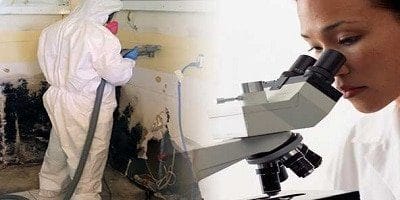
When you receive your lab results from an air sampling done by an indoor environmental professional, it can be a bit confusing. This post was written to give you a bit of insight on what is normal vs. abnormal fungal ecology levels.
The fact is Mold spores can be found both indoors as well in outdoor environments. It is perfectly normal to find low levels of mold spores in an indoor environment’s air. These mold spores are typically brought in from the outdoors. However, if there is mold growth within the building or structure, the spore count in the indoor’s air could indeed become alarmingly high.
While there is no official guideline on interpreting mould concentration levels within a home or building, this is a simplified way of reading the laboratory results with a fairly high degree of accuracy.
Here below is an experts’ opinion which should aid you in interpreting laboratory results. The numbers indicated are a correlation between the spore count and overall building’s condition. If your mold spore count level is high, you should discuss the results with engineers or a mold remediation specialist. Under no circumstances, should spore count levels be used to assess the effect of mold on an individual’s health or condition.
| Level | Indications and notes |
| Spore/m³ | |
| 50- | Trace Level |
| 200- | Very low levels |
| 500- | Normal level |
| 1000- | Clean building with HVAC |
| 1500- | Normal for enclosed building |
| 2000- | Clean building without HVAC |
| 3000- | Potential issue |
| 5000- | Possible mold amplification |
| 10000- | Remediation might be needed |
| 25000- | Cleaning might be needed |
| 75000- | Need for professional cleanup |
| 100000- | Need for professional remediation |
| 500000- | Chronic mold amplification |
| 1000000- | Inadequate flood cleanup |
Source: Air Analysis Inc. and Environmental Analysis Associates
Tags: black mold removal Waterloo, mold testing kitchener ontario, Mould removal companies in guelph ontario, Stratford mold removal services